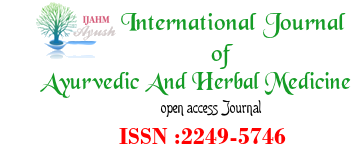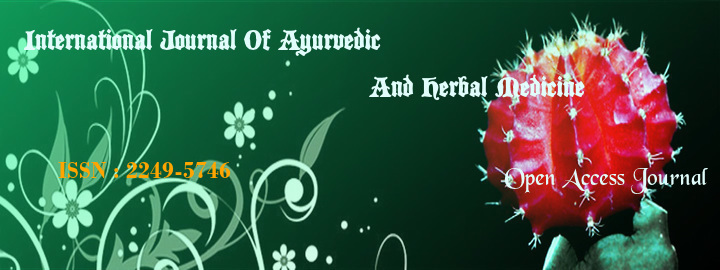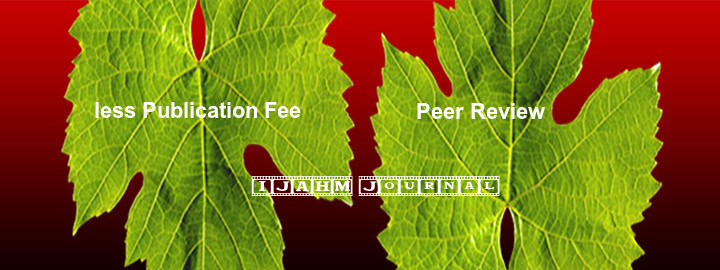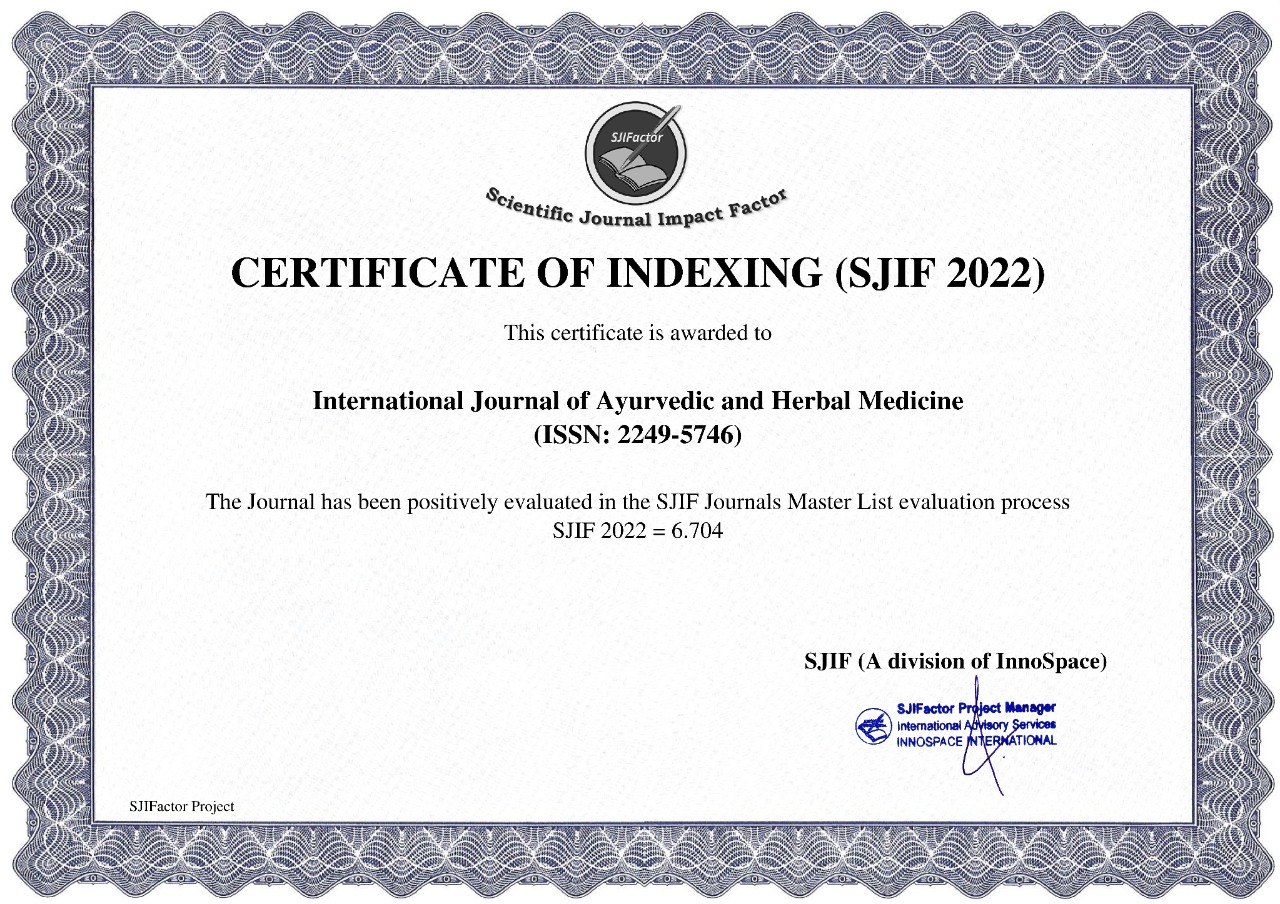


Senga Kitumbe P1, Nkanga Isalomboto C2*, Ngoro Vero3, Welo Unya J4, Opota Onya D5
1,3,4,5Faculty of Pharmaceutical Sciences, University of Kinshasa, P. O. Box 212 Kinshasa XI, Democratic Republic of the Congo. 2Chemistry Department, Faculty of Science, Rhodes University, P.O. Box 94, Grahamstown 6140, Eastern Cape, South Africa.
Corresponding author: E-mail address: This email address is being protected from spambots. You need JavaScript enabled to view it.*
Abstract
The leaves of Cassia alata Linn. (Fabaceae) are famously used in Africa to treat dermatosis in traditional medicine. Many studies on C. alata have previously reported its antifungal and antibacterial activities that justify its medicinal uses. Traditionally, the leaves of C. alata are rubbed on affected body surfaces in order to treat skin infections. Drawing on this medicinal instruction, we have formulated a dermal ointment from the whole leaves of Cassia alata Linn. This was done in order to improve the traditional preparation used against dermal diseases. Some physicochemical characteristics of the formulation such as pH, phytochemical composition and chromatographic profile were studied. In comparison with the aqueous extract of C. alata leaves medicinal properties, gentamicin and ketoconazole discs were used as controls. The preliminary in vitro antibacterial and antifungal activities of the formulated herbal ointment have been evaluated against Staphylococcus aureus and Candida albicans strains. Overall, the herbal ointment demonstrated higher antifungal activity than antibacterial activity based on the zones of inhibition recorded for all the concentrations. The chromatographic fingerprints established and quantitative analyses conducted in this investigation are worth considering for the quality control of the herbal ointment formulated.
Introduction
References
1. Latha PS, Kannabiran K. Antimicrobial activity and phytochemicals of Solanum trilobatum Linn. Afr J Biotech 2006; 5 (23): 2402 –2404.
2. Nair R, Kalariya T, Chanda S. Antibacterial activity of some selected indian medicinal flora. Turkish Journal of Biology 2005; 29: 41–47.
3. Akinyemi KO, Coker AO, Bayagbon C, Oyefolu AOB, Akinside KA and Omonigbehin EO. Antibacterial screening of five Nigerian Medicinal Plants Against S.typhi and S. paratyphi. Journal of the Nigeria Infection Control Association 2000; 3:1-4.
4. Kalia AN. Textbook of Industrial Pharmacognosy. 1st edition 2000, CBS publishers and distributors 9.
5. Abubacker MN, Ramanathan R, Senthil Kumar T. In vitro antifungal activities of Cassia alata Linn. Flower extract. Natural product Radiance 2008, 7(I): 6-9.
6. Igoli JO, Ogaji OG, Igoli NP, Tor-Anyiin TA. Traditional medicinal practices among the Igede people of Nigeria (part II). Afri. J. Tradit. Compliment Altern. Med. 2005; 2(2): 134-152
7. Pieme CA, Penlap VN, Nkegoum B, Taziebou CL, Tekwu EM, Etoa FX, Ngongang J. Evaluation of acute and subacute toxicities of aqueous ethanolic extract of leaves of Senna alata (L.) Roxb (Ceasalpiniaceae). African Journal of Biotechnology 2006; 5 (3): 283 – 289.
8. Chidumé FC, Gamaniel K, Amos S, Akah P, Obodozié O, Wambebe C. Pharmacological activity of the méthanolic extract of Cassia nigricans leaves. Indian Journal of Pharmacology 2001 ; 33: 350-356 .
9. Abatan MO. A noteon the anti-inflammatory action of plants of some Cassia. Fitoterapia 1990; 61 (4) : 336 - 338.
10. Palanichamy S, Nagarajan S. Antifungal activity of Cassia alata leaf extract. J Ethnopharmacol. 1990; 29: 337 – 340.
11. Alalor CA, Igwilo CI, Jeroh E. Evaluation of the antibacterial properties of aqueous and methanol extracts of Cassia alata. J. Pharm. and Allied Health Sci. 2012; 2 (2): 40-46.
12. Timothy SY, Wazis CH, Adati RG, Maspalma ID. Antifungal Activity of Aqueous and Ethanolic Leaf Extracts of Cassia Alata Linn. Journal of Applied Pharmaceutical Sciences 2012 ; 2 (7) : 182 – 185.
13. Esimone CO, Nworu CS, Ekong US, Okereke, B. Evaluation of the antiseptic properties of Cassia alata-based herbal soap. Internet J Altern Med. 2008; 6(1). DOI: 10.5580/b0e
14. Makinde AA, Igoli JO, TA’Ama L, Shaibu SJ, Garba A. Antimicrobial activity of Cassia alata. African Journal of Biotechnology 2007; 6 (13) : 1509-1510.
15. Owoyale JA, Olatunji GA and Oguntoye SO.Antifungal and antibacterial activities of an alcoholic extract of Senna alata leaves. Journal of Applied sciences & Environmental Management 2005; 9 (3): 105 – 107.
16. Reezal I, Somchit MN and Abdul Rahim M. In Vitro Antifungal Properties of Cassia alata (Gelenggang Besar). Proceedings of the Regional Symposium on Environment and Natural Resources 10-11th April 2002, Hotel Renaissance Kuala Lumpur, Malaysia 2002; 1 (13): 654 – 659.
17. Adedayo O, Anderson WA, Moo-young M, Suceckus V, Patil PA and Kolawole DO. Phytochemistry and antibacterial activity of Senna alata flower. Pharmaceutical. Biology 2001; 39 (6): 408 – 412.
18. Khan MR, Kihara M, Omolosa AD. () Antimicrobial Activity of Cassia alata, Fitoterapia 2001; 72, 561 – 564.
19. Idu M, Omonigho SE, Igeleke CL. Preliminary investigation on the Phytochemistry and antimicrobial activity of Senna alata L. Flower. Pak J Biol Sci. 2007; 10: 806 – 809.
20. Odunbaku OA, Lusanya OAF. Synergistic effect of ethanol leaf extract of Senna alata and antimicrobial drugs on some pathogenic microbes. Adv Environ Biol. 2011; 5: 2162 – 2165.
21. El-Mahmood AM, Doughari JH. Phytochemical screening and antibacterial evaluation of the leaf and root extracts of Cassia alata Linn. Afri J Pharm Pharmacol. 2008; 2 (7): 124 – 129.
22. Alalor CA, Igwilo CI, Azubuike CP. Evaluation of the Antibacterial activity of Herbal ointments formulated with Methanolic extract of Cassia alata. Asian Journal of Biomedical and Pharmaceutical Sciences 2012; 2(13) : 15-19.
23. Kone M, Ouattara K, Gnahoue G, Ouattara A, Coulibaly A. Study Ethnopharmacological and Phytochemical Screening of Some Plants Involved in the Treatment of Abdominal Infections in The Department of Kouto (Cote d'Ivoire). Sch. J. App. Med. Sci. 2013; 1(2):56 – 61.
24. Zellagui A, Derouiche K, Gherraf N, Rhouati S. Characterisation of Secondary Metabolites and Evaluation of Antibacterial activity of two Algerian species: Launaea glomerata (Cass. Hook. F. and Cynara cardinculus var. silvestris (Lamk.). J. Microbiol. Biotech. Res. 2012 ; 2 (5): 736 – 740.
25. N’guessan K, Kadja B, Zirihi N, Traoré D, Aké-assi L. Screening phytochimique de quelques plantes médicinales ivoiriennes utilisées en pays Krobou (Agboville, Côte-d’Ivoire) Sci. Nat. 2009 ; 6 (1) : 1 – 15.
26. Vigor C, Vercauteren J, Montels J. Travaux Pratiques de Pharmacognosie (3ème année) : Les substances naturelles dans la chaine du médicament. Université de Montpellier I, Laboratoire de Pharmacognosie 2010, 48p.
27. British Pharmacopoeia. Herbal Drugs and Herbal Drug Preparation Senna leaves ; London 2009, Vol III.
28. Brian M Peters, Raven M Ward, Hallie S Rane, Samuel A Lee, Mairi C Noverr. Efficacy of Ethanol against Candida albicans and Staphylococcus aureus Polymicrobial Biofilms. Antimicrob. Agents Chemother. 2013; 57 (1): 74 – 82.
29. Alsterholm, Mikael; Karami, Nahid; Faergemann, Jan . Antimicrobial activity of topical skin pharmaceuticals - an in vitro study. Acta Derm Venereol. 2010; 90 (3): 239 – 245.
30. Ali-Emmanuel N, Moudachirou M, Akakpo AJ, Quetin-leclercq J. Activités antibactériennes in vivo de cassia alata, lantana Camara et mitracarpusscaber sur dermatophilus congolensis isolé au Benin. Revue Elev. Méd. Vét. Pays Trop. 2002 ; 55(3):183-187.
31. Zaidan MRS, Noor Rain A, Badrul AR, Adlin A, Norazah A, Zakiah I. In vitro screening of five local medicinal plants for antibacterial activity using disc diffusion method. Tropical Biomedicine 2005; 22(2): 165–170
index























